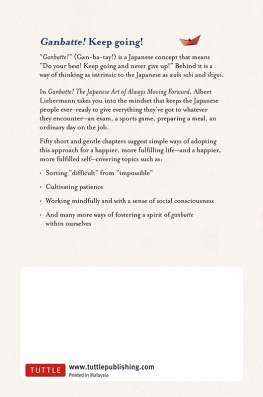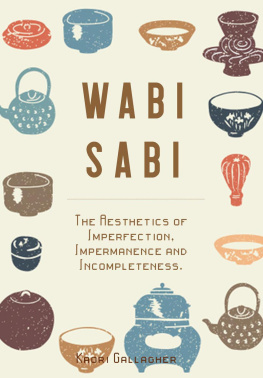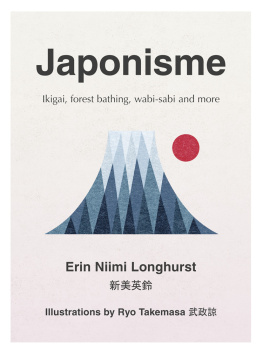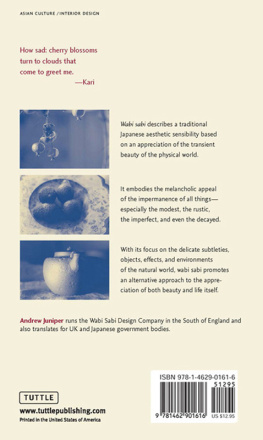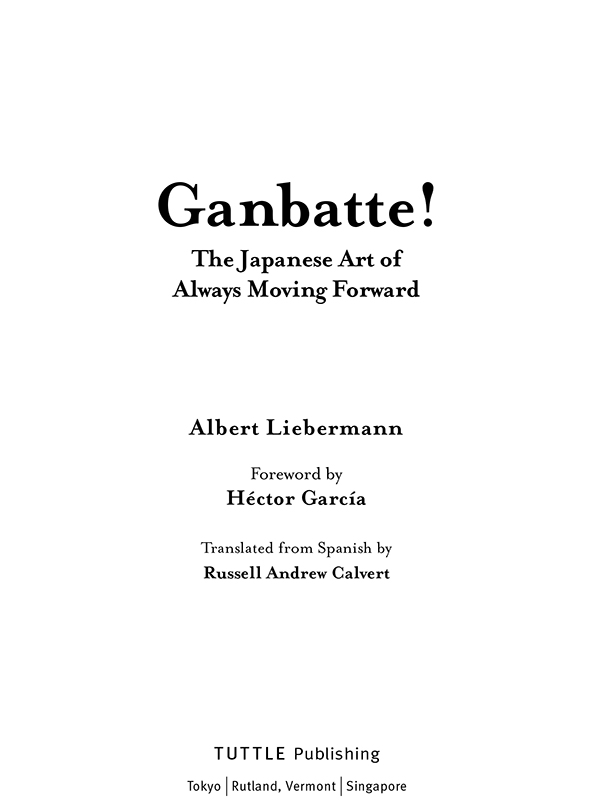Contents
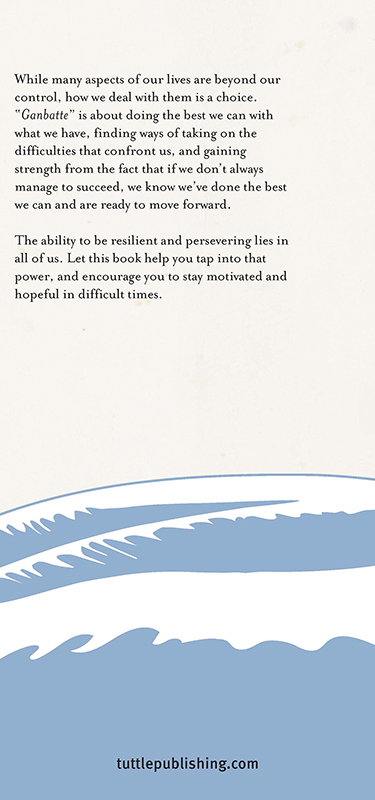
Ganbatte!
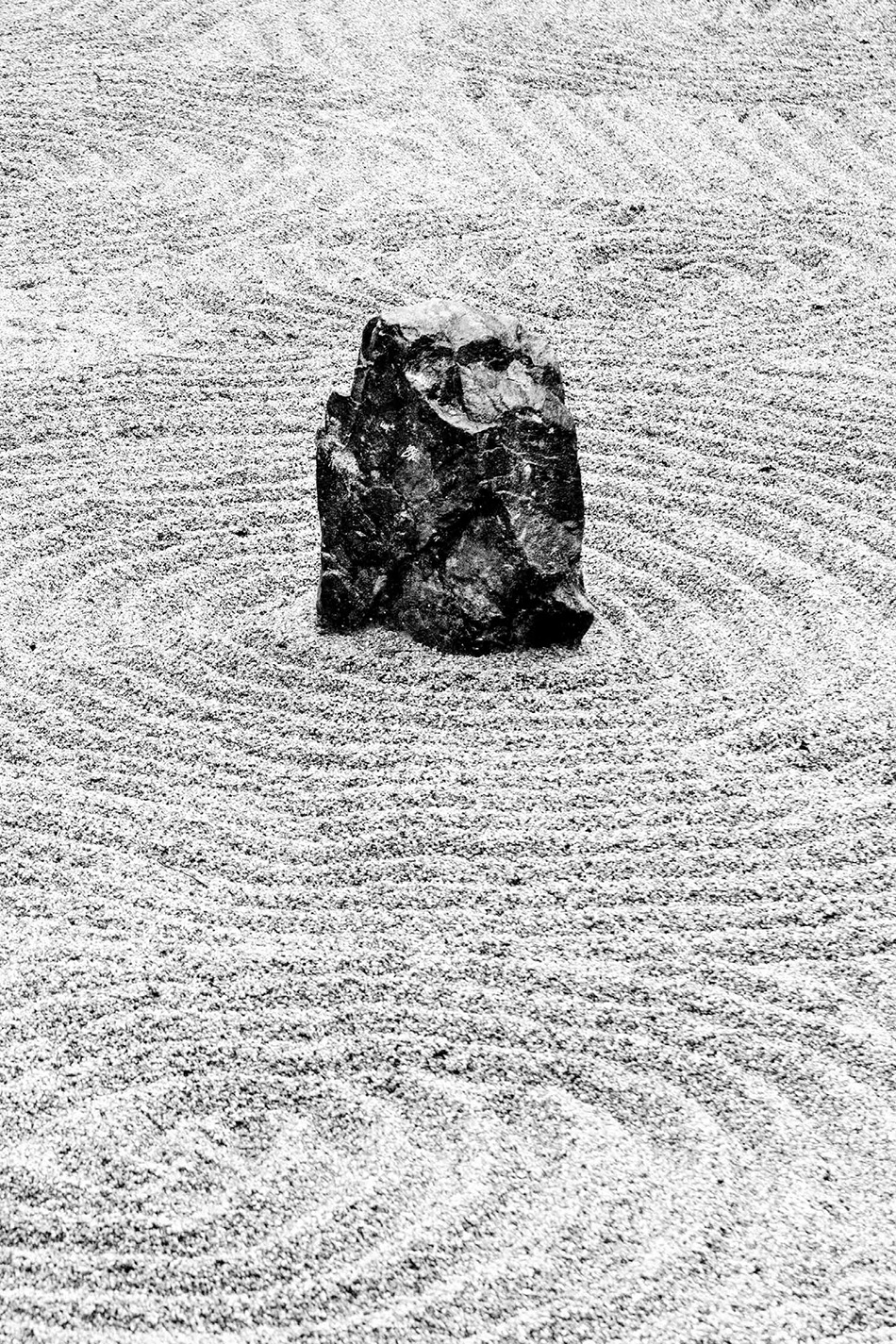
Foreword
The book you are holding in your hands resonates with me in a very particular way.
When my friend and collaborator Francesc Miralles visits me in Japan, its always the start of a new explorationnot only of the beauties of Japan and its history, but of the beauty of the Japanese way of life, fueled by a desire to understand more about its deep roots. A handful of years ago, one such visit took us from walking around Tokyo and Enoshima to a trip far further out, to gimi, the Okinawan village of the centenarians. It was the beginning of an amazing journey for us, an odyssey into the concept and practice of ikigai, the Japanese way to find joy in living each and every day. The culmination of that life-changing sojourn in gimi was our book Ikigai: the Japanese Secret to a Long and Happy Life.
At the end of 2019, Francesc returned to gimi to film a documentary about longevity. I flew from Tokyo to join the adventure.
Almost five years after our initial visit, our thoughts naturally turned to the old people we had interviewed and lived with when we traveled there that first time. What a lovely surprise it was for us to see that Higa was still in great shape. When we met her, she was ninety-six years oldnow, when she welcomed us to her home, straight away she proudly showed us the official Centenarian certificate awarded by the Japanese government.
The next day, our friend Miyagi, with whom wed shared many adventures the first time around, told us that shiro, one of the oldest men in gimi, and whose acquaintance we had yet to make, was willing to meet with us. This 108-year-old welcomed us to his home alongside his 82-year-old son.
shiro got up unaided and came over to greet us. It is inspiring to see such vigor in a 108-year-old person. He told us stories of his life, going back to his memories of the war, which he survived miraculously; few in Okinawa managed to do so.
He proudly showed us a photo of him riding his motorbike on the day of his hundredth birthday. When he spoke about the past, his eyes would light up with the energy and vitality of a teenager. Then we all went out to the garden to water the vegetable patch. shiro posed patiently for the cameras. Then he picked a few shikuwasas (a citrus fruit similar to oranges) and offered them to us as a parting gift.
The last question I asked him was:
What do you think is the secret to your long life?
To which shiro replied:
Ganbatta.
This may be translated as I made an effort and always did the best I could. After a few seconds silence he added:
Mainichi ganbattemasu.
This can be translated as: I make an effort every day. He finished off by bowing to Francesc and me with a final word of farewell:
Ganbatte!
That means Come on, make an effort with everything from now on.
This conversation with shiro put fresh emphasis on a mindset Ive been observing in the Japanese ever since I arrived in Tokyo almost twenty years ago. The Japanese are resilient to adversity, and not giving up is one of their core values. This spirit, this way of living, is something that can be sensed not only through living or traveling in Japan, but also through Japanese literature, films, music, anime and manga. Permeating all aspects of life is the mantra:
Nana korobi ya oki
Fall seven times, get up eight.
How wonderful now, to have a book that explores the ganbatte spirit in-depth, in a simple and straightforward way! In Ganbatte! The Japanese Art of Always Moving Forward Albert Liebermann puts spirit and practice together, sharing some of the many ways we can put ganbatte into everything we do in our day-to-day, into whatever endeavor weve undertaken, whatever goal weve set. From guidelines for persevering in business, art and love, to thoughts on cultivating a balance of determination and serenity, work and relaxation, he shows us how ganbatte leads not only to achieving a concrete goal, but to becoming someone who is always growing, always finding passion in life. This, after all, is how Higa, shiro and his son are living lives that are happy as well as long.
Here too we learn how Japans deep, ages-old approaches to lifelike ganbatte, ikigai and wabi sabibring home again and again the fact that the most satisfying things in life are the things we have worked for. Striving, but doing so with a happy heart and a sense of perspective, is the key to experiencing lifes fullness. This book is full of encouraging thoughts on how to keep that perspective, renew that happy heart when obstacles seem insurmountable, recharge and move forward. It shows us how we can come to truly value the act of simply doing our best.
Ganbatte is not just an expression of encouragement, a pep talk in a single word, but a way of looking at life.
Ganbatte is a mentality, an attitude that may be learned and applied to our everyday life.
Ganbatte is a tool for encouraging yourself and your loved ones.
Ganbatte will help you to always move forward with a smile, come what may.
Ganbatte is a guiding light that helps us avoid falling into apathy and despondency when we experience unexpected misfortunes.
With this book, youre sure to find or recognize the inner resources that help you navigate your life, and find even more ways to use them to their full potential. Whatever is ahead, youll know that you have the tools to refresh your spirit and move forward.
I hope youll enjoy this book as much as I did, and that it will help you live your fullest, happiest life.
Thank you, Albert!
Hctor Garca
Preface
Never Give Up, Keep Moving Forward
In todays difficult and challenging times, many people feel the need to rebuild their lives, just as the Japanese have always done following wars or natural disasters.
The secret to this nations phoenix-like ability to be reborn time and again from its ashes is to be found in the ganbatte philosophya Japanese term we may translate as Do your best, never give up, keep moving forward.
Just as in many countries people say good luck before someone takes an exam, has a job interview or begins a competition, the Japanese say ganbatte to encourage the person to make an effort. There is a great change in attitude implied by this:
Good luck depends on external factorsit places fate outside the persons control.
Ganbatte calls on a persons internal strengths and resourceswhatever happens depends on the effort you make.
Through this books 50 inspiring chapters, we shall get acquainted with this Japanese philosophy of tenacity and resilience, which is the art of overcoming adversity.
Just as wabi sabi shows us the beauty of lifes imperfections, ganbatte shows us how to overcome all its obstacles and to carry on with whatever you may have set your mind to doing, with energy and motivation.
If you apply the tenacity and resilience of the Japanese to your everyday life, difficult things become easy and the impossible becomes possible.

